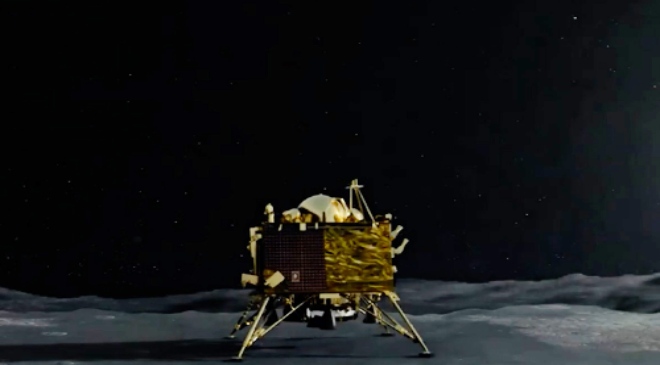It’s finally official. Approximately seven months after Prime Minister Modi suggested naming the landing site of Chandrayaan-3 on the moon as Shiv Shakti, the International Astronomical Union (IAU) has officially approved the name ‘Statio Shiv Shakti.’
The working group for Planetary System Nomenclature of the IAU approved the name for the iconic landing site of Chandrayaan-3’s Vikram lander on March 19, 2024.
Read More: RBI to conduct special audit for regulatory breaches by IIFL Finance, JM Financial Products
According to the Gazetteer of Planetary Nomenclature, a comprehensive repository detailing planetary names endorsed by the IAU, the official approval states: “The IAU Working Group for Planetary System Nomenclature has approved the name Statio Shiv Shakti for the landing site of Chandrayaan-3’s Vikram lander.”
According to the Gazetteer of Planetary Nomenclature announcement, the name ‘Statio Shiv Shakti’ derives from Indian mythology, symbolizing the dual nature of masculine (represented by “Shiva”) and feminine (represented by “Shakti”). This name has been attributed to the landing site of Chandrayaan-3’s Vikram lander.
The IAU is often acknowledged as the global authority for assigning names to planetary surface features.
For this, the IAU has to adhere to specific rules and conventions in this process. For example, Rule 4 emphasizes the international nature of solar system nomenclature, with final name selection resting with the IAU, while Rule 9 prohibits the use of names with political, military, or religious significance, except for those of political figures predating the 19th century.
When he announced the name of the landing site on August 26, PM Modi gave the rationale behind the name Shiv Shakti. “In Shiva, there’s a resolution for humanity’s welfare and Shakti gives us strength to fulfil those resolutions. This Shiva Shakti Point of Moon also gives a sense of connection with the Himalaya to Kanyakumari,” PM Modi had said.
In addition to naming the Chandrayaan-3 landing site as ‘Shiva Shakti’, PM Modi back in August had declared that the spot where Chandrayaan-2 made its mark would be known as ‘Tiranga’. He expressed that this designation would serve as a source of inspiration for India’s endeavours and a reminder that setbacks do not signify defeat.
Fifteen years prior to Chandrayaan-3’s soft landing, India’s Chandrayaan-1 mission’s moon impact probe (MIP) touched down on November 14, 2008. The designated name for the impact site, ‘Jawahar Point’ or ‘Jawahar Sthal’, was communicated to the International Astronomical Union (IAU).
The Astrogeology Science Centre of the U.S. Geological Survey, in collaboration with the IAU and with funding from NASA, maintains the Gazetteer of Planetary Nomenclature, serving as a vital resource for planetary naming conventions and approvals.
(With inputs from agencies)





































